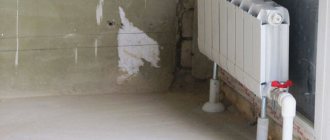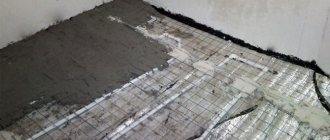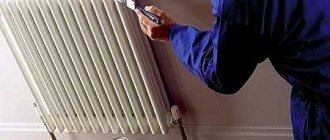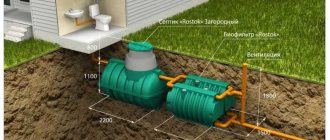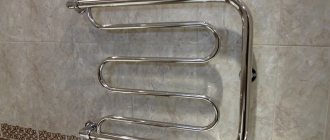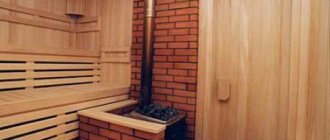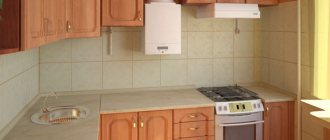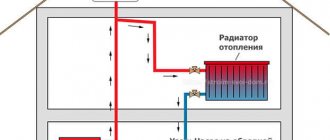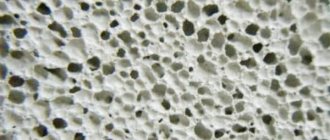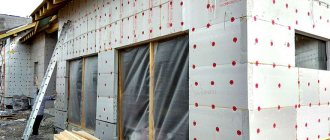What is galvanized steel
In the production of construction products, it is common practice to coat steel sheets with a thin layer of zinc. This increases the service life of the product due to its resistance to corrosion and aggressive external environments. Galvanized steel coils are used for the manufacture of roofing and fence materials, water supply systems and in many other areas.
How to distinguish stainless steel from galvanized
Unlike galvanizing, stainless steel is an alloy with the addition of chromium. Stainless steel sheets are not coated; the color of its surface and cut is uniform, usually matte. During the coating process, galvanized steel becomes covered with characteristic crystallization patterns or has a mirror surface with a tint of blue.
If the stainless steel is processed to a mirror shine, you can find out exactly what exactly is in front of you using a chemical reaction. You need to drop hydrochloric acid onto the edge of the steel sheet. By interacting with zinc, hydrogen chloride causes blistering spots on the surface. In addition, alloys with chromium do not have magnetic properties; if the magnet is attached to a sheet of steel, it is probably galvanized.
Is it necessary to paint galvanized metal?
The zinc layer on the surface of the steel reacts slowly with the external environment. During the pipe manufacturing process, the steel sheet is rolled under pressure, cut, and welded joints are possible. These parts of the part become more vulnerable, reducing the service life of the entire pipe. Applying a coat of paint adds durability and an aesthetically pleasing appearance. But there are some nuances that are important to take into account in order to avoid annoying mistakes that reduce all efforts to zero.
What requirements must paint compositions meet?
In middle and northern latitudes, weather conditions have a particularly aggressive effect on the coating, so it is important to protect construction components by all available means. When choosing paint for a galvanized drain pipe, it is important to take into account some of the requirements for it. The paint must provide:
- Reliable protection from environmental factors.
- Resistance to fading in the sun.
- Good adhesion to the zinc layer.
- Resistance to moisture and temperature changes.
- Quick drying and easy to apply.
These requirements are especially relevant for pipes intended to be installed outdoors. Painting compositions for steel will provide protection and an attractive appearance.
Types and differences of paints
Among the variety of types of paints, you need to remember that not every one is suitable for working on metal; these types of surfaces are considered the most capricious to paint. Based on their advantages, polymer powder dyes could be called ideal. They combine well with metals, are durable and wear-resistant. But they have a big drawback - the painting process is possible only with the help of special equipment.
You can paint it yourself using acrylic, alkyd and vinyl dyes. When choosing paint for coating at home, it is recommended not to save on the cost of the paint product, choosing it in accordance with the recommendations of specialists.
Acrylic
Acrylic-based metal paints appeared not so long ago, but quickly gained recognition. This coating is durable, does not fade and resists corrosion well due to its organic solvent base and special additives in the composition. Does not crack over time, does not support combustion, and tolerates heat to high temperatures.
The cost of acrylic paints is also very attractive. In addition, it is convenient to work with - if it gets on the skin, the paint is washed off with water before it dries completely. Environmental friendliness and the absence of a characteristic chemical odor allows it to be used in a home with small children.
Alkyd
Alkyd paints go well with galvanized surfaces. Unlike oil-based ones, they protect against rust and cracks. They have good drying speed and adhesion. Gives a dense glossy color. They are relatively inexpensive.
Disadvantages include flammability and poor heat resistance in direct sunlight. It is important to work with them in a well-ventilated area, as their fumes are toxic. In addition, over time, alkyd compounds react with the zinc layer and reduce its protective properties.
Vinyl enamels
The only significant drawback of vinyl enamels is their high cost. They have excellent covering properties, are easy to apply, and are resistant to corrosion and chemical influences. They form a water- and weather-resistant coating that can withstand temperature changes from –60℃ to +100/+130℃.
This type of paint is especially good for zinc coating. After drying, a durable and elastic layer is formed. This is excellent protection against scratches, chips, and mechanical damage.
Primer GF-021 gray and red-brown for metal and primer for pipes
GF-021 soil looks like a liquid-plastic mass that has a specific smell of solvents used in the production process, regulating additives and a drier used to speed up drying. The composition is a suspension of glyphthalic or alkyd varnishes and anti-corrosion pigments with additives.
Primer GF-021 has found wide application in exterior work for preliminary protective coating of wooden, metal or other products with which it has good adhesion, allowing for long-lasting, resistant pre-painting anti-corrosion treatment. Before priming, especially if it is done using a spray gun, it is necessary to dilute GF-021 to reduce the viscosity level. In this case, xylene GOST 9949 or 9410, solvent GOST 10214 or 1928, or any of them together with white spirit (nefras S4 155/200) GOST 3134 in the recommended proportion of 1:1 are used as a diluent, but the proportion of solvents should not exceed a quarter of the mass of the primer itself. It is possible to use turpentine; when painting in an electrostatic field, use thinner RE-4V or its analogue RE-3V. The surfaces to be treated are first completely cleaned of dirt, dust and old paintwork, traces of possible corrosion are removed, thoroughly degreased and dried. The applied coating retains its declared characteristics in the temperature range from forty-five degrees below zero to sixty degrees Celsius, does not react with sea or fresh water, and is not affected by mineral oils and detergents.
Application of GF-021 primer is carried out by roller, brush, spraying or vacuumization, immersion or other method at an ambient temperature of at least five degrees and not more than twenty degrees Celsius, preferably in two layers. The time required for the first layer to dry at a temperature of +20°C is an astronomical day. The same conditions must be observed before working with the primer if it was at sub-zero temperatures during storage or transportation.
It is used as a base for paints and varnishes such as PF, GF, EF, FL and the like, but can also be used as an independent coating. It is produced mainly in accordance with GOST 25129-82 in red-brownish color, or in accordance with TU in light gray tones.
Structures treated with a primer are distinguished by an even matte finish or have a dull gloss, and are excellently sanded without “saturating” abrasive materials. Excellent strength and quality characteristics are determined, first of all, by the use of high-quality high-molecular copolymers in the manufacturing process, and the relatively low cost of GF-021 is due to their domestic origin.
The primer should not be in an area exposed to direct sunlight; the container must be hermetically sealed, limiting the entry of air and precipitation. When working with it, you should use personal protective equipment to prevent the composition from getting into the eyes and open areas of the body. It is recommended to carry out painting work either outdoors or in a well-ventilated area, away from possible sources of ignition. It must be remembered that GF-021 soil is toxic and requires specialized disposal; draining of residues into the general sewer system is strictly prohibited.
CONSUMABLES AND RELATED PRODUCTS:
Paint brushes
flat and fluted
Workwear and
household equipment
This is interesting: Selecting and applying a primer to foam and gas blocks: studying from all sides
Tips for choosing
When choosing a particular paint, first of all, you should pay attention to the functions that the pipe will perform. If it is intended for cold drainage, it is more important to consider the anti-corrosion properties. For hot water pipes heat resistance. Storage periods must be normal, since after their expiration the composition of the paints begins to deteriorate.
approximate price
The exact cost of paint depends on many parameters, such as the manufacturer, packaging volume, place of purchase and other nuances. The table below shows approximate prices for paint:
| Type of paint | Price per kg, rub |
| Acrylic | 250-650 |
| Alkyd | 150-450 |
| Vinyl | 350-1000 |
When purchasing, please note that the packaging with paint contains a mention of the compatibility of this type of material with zinc surfaces. Not all paints are suitable for working with galvanization.
Why choose powder coating
Powder coating of galvanized pipes is much more practical than coating them with paints, epoxy and other compounds. Powder paint on the surface has its advantages:
- has elasticity when bending;
- heat resistance in the range – 60°С… +150°С;
- high adhesion of paint to pipe;
- In terms of the smoothness of the coating, it is second only to glass enamel.
The painting of profile heating pipes is carried out by highly qualified craftsmen with extensive experience (10 years or more). The use of the latest equipment and modern technologies makes it possible to paint with high quality and quickly.
The work is completed within the agreed time frame with the possibility of delivering the finished product to any address. The client also has the opportunity to order the coating of the painted surface with a protective film, which will maximally protect the integrity of the surface during transportation.
How much paint will be needed
Paint consumption also depends on several factors - its hiding power, density and number of layers, composition and method of painting. The “Calculation Calculator” table shows the approximate consumption per 1 m2 when painting in two layers. The approximate consumption of the primer layer for paint has also been added. It is recommended to obtain more accurate information from the manufacturer.
Calculator
| Type of paint | kg |
| Acrylic | 0,25 |
| Alkyd | 0,37 |
| Vinyl | 0,58 |
| Primer | 0,19 |
How to paint galvanized pipes with your own hands
If you decide to paint a galvanized pipe with your own hands, first carefully read all the stages of the process. The result will please you for many years, provided that all requirements for pipe preparation and painting are met.
Pipe surface preparation
Previously, experts recommended keeping the product in contact with weather for a year and only then painting it. This requirement is associated with the natural process of zinc oxidation and the formation of so-called “white rust”. With the advent of modern coloring compounds, the need for aging the pipe has disappeared.
Typically, finished galvanized steel products leave the factory conveyor in a special protective lubricant. This layer protects the zinc coating from rapid contact with the environment, but before painting, to prevent the paint from peeling off, it must be removed with any alkaline solution. The solution must be thoroughly rinsed with water and the product allowed to dry completely.
Painting process
Before painting, to improve the adhesion of the zinc layer to the paint, it is recommended to treat the surface of the pipe with a special primer. Some craftsmen recommend cleaning the zinc layer with any abrasive, such as sandpaper. But it should be remembered that in this way the product will lose the protective properties of zinc.
Having chosen the paint in accordance with the recommendations and future operating conditions of the pipe, after the primer has completely dried, you need to start painting. It is most convenient to apply with a spray gun, but you can also use a brush or small roller. After applying the first coat, allow the paint to dry for the time specified by the manufacturer. Then apply a second coat and let dry again. After which the galvanized pipe is ready for installation and use.
Coloring video
For a more clear idea of how to paint galvanized pipes, it is recommended to watch the video on painting (in the video, corrugated sheets are painted, but there is no difference in technology). It presents the process in detail with step-by-step instructions, provides recommendations that will help you complete the work as well as possible, and discusses typical mistakes made by beginners.
In conclusion, I would like to note that metal pipes made of galvanized steel, due to their reliability and low cost, are popular among private sector builders. After reading the article on how to choose paint and paint a pipe, you can extend its service life for many years.
Using the links below, you can subscribe to updates on site articles to be the first to learn new information on this topic. Tell your friends about us on social networks by sharing the article with them. Thank you for your attention!
(
1 ratings, average: 5.00 out of 5)
PREPARING THE SURFACE FOR PAINTING
In the question “ how to paint galvanized steel so that the paint does not peel off ,” you should follow certain recommendations for preparing the surface of galvanized steel:
Removing old paint using the stripping method
For these purposes, sandpaper or sandblasting is used. Cleaning is done so that the old coating is removed, but the base is not damaged.
Treatment with a degreasing compound
Degreasers allow you to remove dirt, grease, mold and other deposits from the surface that can impair the quality of the paint. At the same time, the degreasing composition does not damage the surface of the product itself. It is recommended to carry out treatment in small areas to prevent problem areas from being missed.
For cleaning and degreasing, the following are most often used:
- White Spirit;
- Chlorine bleaches;
- Comet;
- Kerosene.
Drying
It is carried out until the surface is completely dry to prevent the degreaser from reacting with further applied products.
Removing white rust
White rust occurs as a result of the destruction of the galvanized layer under the influence of the environment and is a white powdery film. White rust can be removed using fine-grit sandpaper with a grit rating of 120 or less. Sanding is done with light circular movements. At the end of the process, the dust is removed with a slightly damp cloth or rags.
Abrasive treatment
To improve the adhesive properties, allowing the paint to adhere as firmly as possible to the surface being painted, the steel must be treated with abrasives and white (distilled) vinegar. The acid contained in vinegar will etch the galvanizing and give it a rougher structure; substances containing abrasive particles will help enhance the effect.
Exposure to vinegar is usually a minimum of 1-2 hours. It is worth considering that the longer the acid acts on the surface, the more pronounced the etching effect.
Padding
Most often, latex and epoxy primers for exterior use are used for these purposes. It is worth considering that due to its durability and resistance to damage, epoxy primer is optimal in cases where the product will be in the most aggressive conditions. The composition is applied with a brush or spray. The latter is most appropriate if we are talking about a large cultivated area. Application is carried out in a sectional manner, allowing for the most accurate distribution of the primer. Exposure time depends on the brand of primer mixture used and averages from 2 to 6 hours. You can start painting only after the primer has completely dried and there is no sticky effect.
